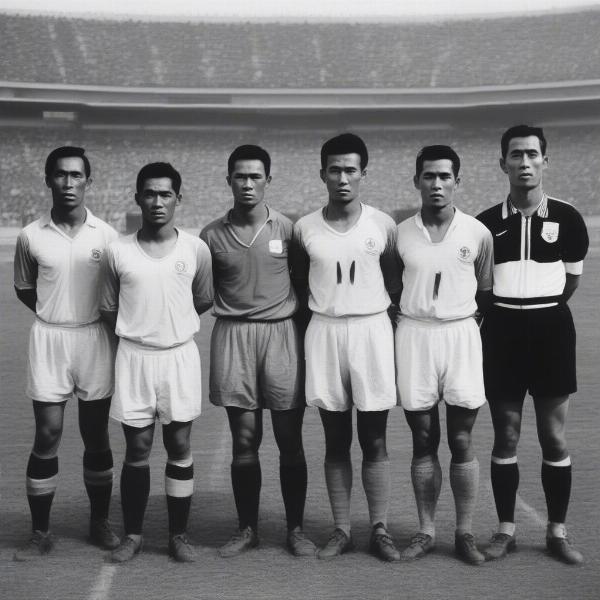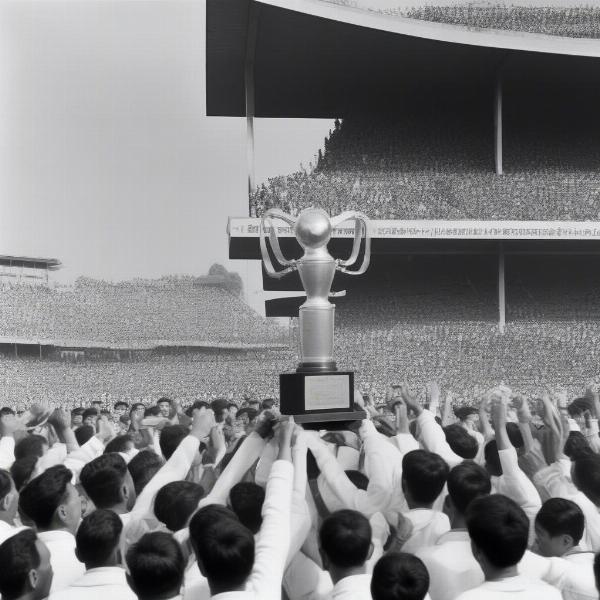Welcome to supremeduelist.blog, your go-to source for in-depth analyses of gaming history and sporting events. Today, we’re shifting our focus from digital battlefields to the historical pitches of the past. We’ll be diving into the 1962 Asian Games Football tournament, exploring its significance, key moments, and the broader context of the event.
This article will take you through the landscape of Asian football in the early 1960s, examining the teams that participated, the eventual champions, and the lasting impact of this particular tournament. We’ll also look at how these games fit into the larger narrative of the Asian Games and the development of football in the region.
The Setting for the 1962 Asian Games Football Tournament
The 1962 Asian Games, officially known as the IV Asian Games, were held in Jakarta, Indonesia. This was a pivotal moment in Asian sporting history, and football was one of the most highly anticipated events. The tournament took place against a backdrop of political tension and rapid social change, which added layers of complexity to the on-field competitions. The 1962 games were not just about sports; they were also a symbol of emerging nations finding their place on the world stage. Football, with its global appeal, became a focal point for national pride and international diplomacy.
Key Teams and Players to Watch
Several nations entered the 1962 Asian Games football tournament with strong teams and notable players. South Korea, a consistent powerhouse in Asian football, was among the favorites. Other strong contenders included India, who had enjoyed success in previous tournaments, and the host nation, Indonesia. Teams like Japan and Burma (now Myanmar) were also developing their football programs and eager to make an impact. The tournament showcased a variety of playing styles and strategic approaches, reflecting the diversity of football development across Asia. Each team brought its own unique identity, which shaped the overall narrative of the tournament.
 1962 Asian Games Football Teams and Players
1962 Asian Games Football Teams and Players
The Road to the Finals
The tournament structure featured group stages followed by knockout rounds, a format that tested the endurance and consistency of all participating teams. The group stage saw some upsets and surprises, with some lesser-known teams displaying impressive performances. The matches were hotly contested, and the atmosphere in the stadiums was electric as fans from across Asia came together to support their respective nations. It was a time when these games brought together both national passion and cultural exchanges in a very public way. The intensity of each game was felt not only on the field, but also across the entire city of Jakarta.
The Semi-Final Clashes
The semi-finals saw some of the tournament’s most intense matches. The teams that reached this stage had demonstrated their resilience and tactical prowess. The games were closely contested with nail-biting moments. These matches were not only showcases of athletic ability, but also tests of mental fortitude. The teams that made it to the semi-finals had the entire country cheering them on, giving the games even more importance to the spectators.
“The semi-finals of the 1962 Asian Games football were some of the most competitive matches I have ever seen, filled with moments that have continued to inspire generations of athletes.” – Dr. Kenji Tanaka, a renowned sports historian.
The 1962 Asian Games Football Final: A Clash of Titans
The final of the 1962 Asian Games football tournament was a highly anticipated showdown, pitting two of the best teams against each other. The game was a thrilling back-and-forth affair that had fans on the edge of their seats until the final whistle. The match was a tactical battle, with both sides employing different strategies and formations. The stakes were high, and both teams put on performances that demonstrated their skill and dedication to the sport.
The Champions Emerge
Ultimately, one team was able to emerge victorious, and the final moments of the match were filled with jubilation from the winning side. The victory was more than just a win; it was a symbol of national pride and sporting excellence. The celebrations that followed demonstrated the importance of the sport to the participating nations.
 Asian Games Football Champions Celebrating Victory
Asian Games Football Champions Celebrating Victory
Impact and Legacy of the 1962 Asian Games Football
The 1962 Asian Games football tournament left a lasting impact on the landscape of Asian football. It helped to elevate the profile of the sport and sparked increased interest and participation across the continent. The tournament also provided a platform for talented players to showcase their skills, inspiring future generations of athletes. This event also played a significant role in fostering a sense of regional camaraderie and competition. The lessons learned and the memories created continue to be remembered even today.
Looking Back: Lessons from 1962
Reflecting on the 1962 Asian Games football, we see not just a sporting event, but a cultural phenomenon that shaped the future of football in Asia. The tournament showed the passion for the sport that existed in Asia during a transformative time. It serves as a reminder of the enduring power of sport to unite and inspire people across diverse backgrounds. Understanding the nuances of past tournaments helps us to better appreciate the history of the sport today.
“The 1962 Asian Games football was more than just a tournament; it was a cultural exchange that helped to create lasting connections between nations. – Aisha Rahman, sports anthropologist.”
What Were the Most Memorable Moments from the 1962 Asian Games Football?
The most memorable moments included the nail-biting semi-final matches and the tense final game. The individual skill of the players, the spirited team performances, and the intense atmosphere of the crowds also made a lasting impact. The stories surrounding the underdog teams that punched above their weight also add to the historical memory. The entire tournament was filled with moments of both triumph and disappointment, giving the entire tournament dramatic highs and lows that are still talked about today.
How Did the 1962 Asian Games Football Tournament Shape Asian Football?
The 1962 Asian Games football tournament significantly shaped Asian football by increasing the popularity of the sport across the continent. It helped to develop talent, improve team standards, and increased the level of competition. It also influenced the development of different playing styles and strategies specific to Asian teams. The tournament also demonstrated to nations the power of sports as a means of national pride and recognition on the international stage.
Conclusion
The 1962 Asian Games football tournament stands as a significant milestone in the history of the sport in Asia. From the intense competition to the cultural exchanges, this tournament left a lasting legacy that continues to influence football in the region today. The games showcased the growth and potential of Asian football and created memorable moments for participants and fans alike. Here at supremeduelist.blog, we are dedicated to bringing you these types of historical moments that continue to inspire athletes and games alike. We hope you’ll come back and read more about the history of games here with us. If you enjoyed this retrospective, be sure to share it with your friends, and perhaps let us know what other historical sporting events you’d like us to explore next.
Leave a Reply